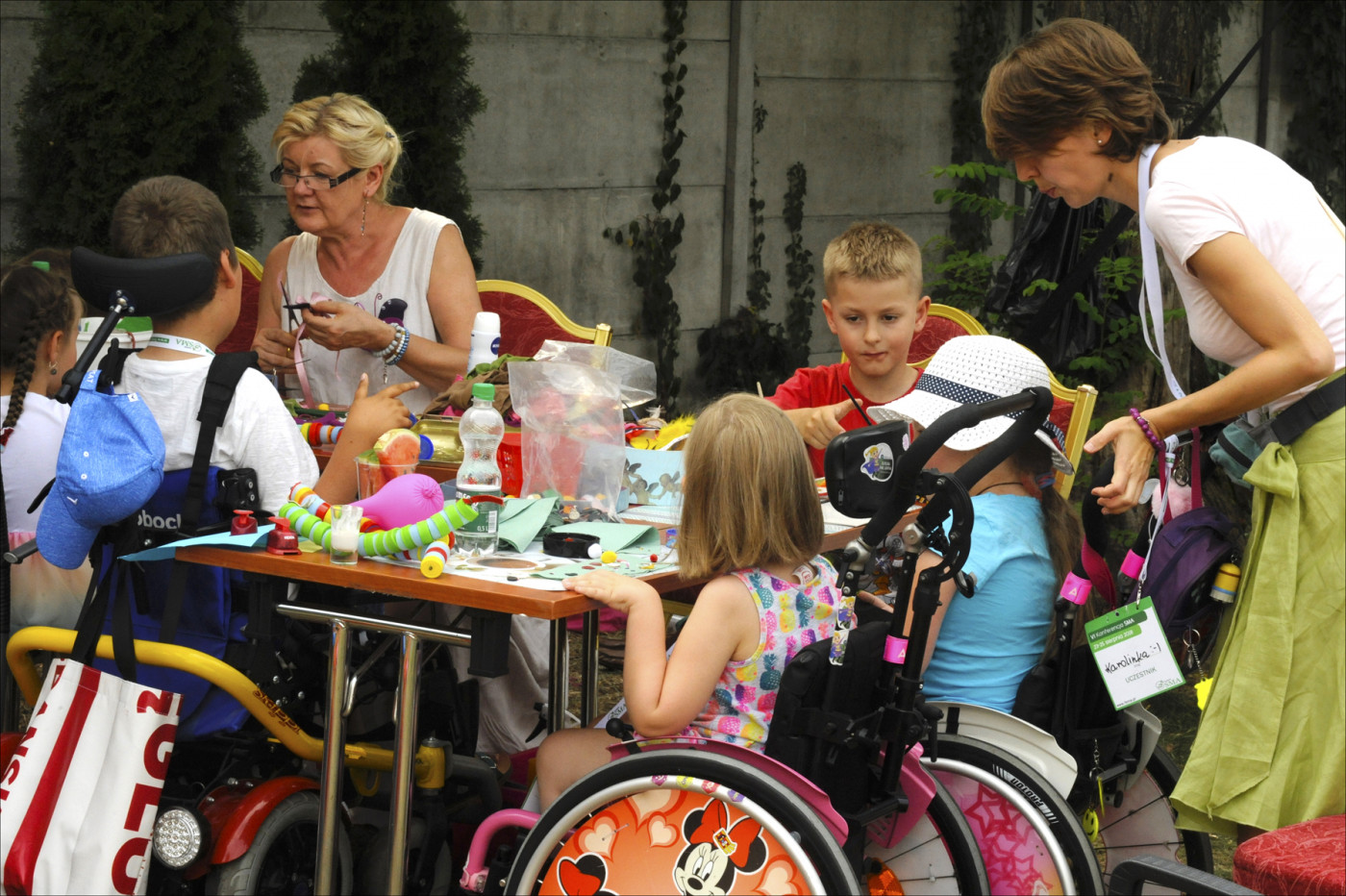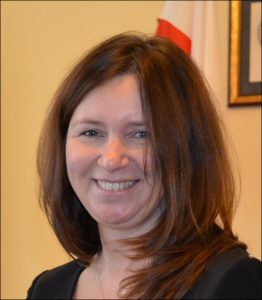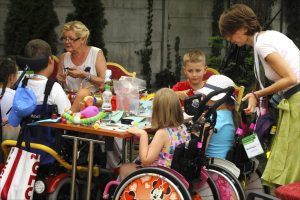Polish Nutritionist Stresses Importance of Proper Diet in Managing SMA

Polish children with SMA enjoy a picnic lunch and games during an Aug. 24 conference in Warsaw. (Photo by Larry Luxner)
Parents of children with spinal muscular atrophy (SMA) — as well as doctors — often don’t give enough importance to the role good nutrition plays in improving patients’ quality of life, said a leading Polish SMA expert.
Eva Toporowska, a pediatric gastroenterologist at the Medical University of Lodz, spoke on “Diet and SMA” at last month’s Sixth Polish SMA Conference in Warsaw. The event was hosted by the Polish nonprofit group Fundacja SMA.
“Nutrition in SMA remains an open question, so we really need to explore this area, because there are no strict guidelines,” Toporowska told SMA News Today in a subsequent phone interview from Lodz.
The main problem, she said, is dysphagia, or difficulty swallowing.
“This is the first barrier in children with SMA because they are not able to properly take food,” she said. “New guidelines suggest we should perform video fluoroscopy, a procedure that enables us to see how the child swallows. This should be performed in all children with SMA who are non-sitters. If the child is unable to swallow safely, we should activate tube feeding to prevent malnutrition.”
Gastroesophageal reflux disease (GERD) might also be present in SMA children — particularly in type 1 cases — she said, “but we shouldn’t overestimate this problem, because not every child with SMA will have reflux.”
Interested in SMA research? Check out our forums and join the conversation!
GERD causes acid reflux and may be associated with silent aspiration (food or drink that enters the respiratory tract without any warning signs, such as coughing or choking). That can lead to pneumonia and respiratory distress.
In addition, scoliosis may contribute to increased abdominal pressure, leading to GERD, and constipation can worsen GERD as well. One way to manage reflux is to eat small portions throughout the day rather than large meals.
“Whatever we know about diet from literature is usually based on experience, because we don’t have many studies,” she said. “There is a very subtle balance between undernutrition and overnutrition. Once you increase the energy in the diet, it’s very easy to cross the line because these kids don’t have muscle. If you give them too much energy, they will have too much fat. And a high-energy diet may cause problems with aspiration.”
Calcium, vitamins are critical
Also critically important is bone health, she said. Between 80 and 90 percent of kids with SMA are deficient in calcium or vitamins D, E, or K — a situation that can boost the risk of fractures.
“Because these children don’t have enough muscle mass, they are very prone to metabolic disorders like hypoglycemia (low blood sugar levels),” she said. “Children with SMA type 1 should not go more than six hours without food, and type 2 children shouldn’t go longer than eight hours.”
Likewise, because children with SMA are much less physically active, they generally need 20 to 50 percent fewer calories than healthy kids, Toporowska said.
“There are also different caloric requirements between kids on respiratory support and those who breathe by themselves,” she said. “Respiration without support is very hard work for these children, so they’re consuming more energy.
In addition, children who receive Spinraza (nusinersen)— even those with type 1 — develop more normally. Toporowska said future nutritional guidelines might very well take into account not only the type of SMA a child has, but also what type of therapy he or she is receiving.
“There will be a difference between children who grow with the natural history of the disease and those on nusinersen,” she said. “Kids who are treated with nusinersen are in a completely different category. I know children who suffer from type 1 and have been on tube feeding for years, and those with the same disease on nusinersen who are able to consume a normal diet.”
Kacper Rucinski, president of Fundacja SMA and organizer of the Warsaw conference, said Toporowska’s presentation highlighted an often-neglected aspect of caring for children with the disease.
“In SMA, many doctors focus on ventilation, breathing and muscle functions, especially physiotherapy. That’s a big focus in Poland. But nutrition is somehow off the radar,” said Rucinski, who has a 9-year-old daughter with SMA type 2. “It’s well known that those with SMA are frequently either underweight and malnourished, or overweight. This shows how difficult it is to maintain appropriate diet for the condition.”
He added: “People with SMA should always be under the care of a good, qualified nutritionist. Unfortunately, it’s not often we find such a nutritionist who is knowledgeable about SMA. For me, this was a real eye-opener.”









